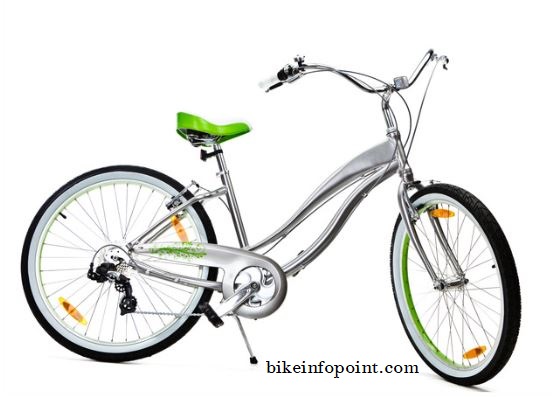
Can a Man Ride a Women’s Mountain Bike?
Are you a man considering purchasing a women’s mountain bike? This may seem like a strange question. But the truth is that the design and fit of a mountain bike can vary greatly between men’s and women’s models.
The question of whether a man can ride a women’s mountain bike may arise for a variety of reasons. A man may be considering purchasing a women’s mountain bike because it is a better fit or because it is more affordable, or he may simply be wondering if it is possible to ride a bike designed for a different gender. Understanding the potential benefits and drawbacks of a man riding a women’s mountain bike can help him make an informed decision about whether it is the right choice for him. In this article, we will explore whether a man can comfortably and safely ride a women’s mountain bike.
Table of Contents
ToggleAnatomy and Body Size Differences Between Men and Women

There are several differences in body size and anatomy between men and women that can affect the fit and comfort of a mountain bike. These differences may include:
Height: Men are generally taller than women, with an average height difference of about 5-6 inches. This height difference can affect the fit of a mountain bike, as bikes are typically available in a range of sizes based on the length of the frame. A bike that is too small or too large may be uncomfortable or difficult to ride. So it is important to choose a size that is appropriate for the rider’s height.
Weight: Men are also generally heavier than women, with an average weight difference of about 20-30 pounds. This weight difference can affect the performance of a mountain bike, as the suspension and other components may be designed to handle a certain weight range. A bike that is too light or too heavy may not perform as well as a bike that is within the appropriate weight range.
Proportions: Men and women also tend to have different proportions, with men having longer torsos and shorter legs compared to women. This can affect the fit of a mountain bike, as the top tube length and seat tube angle may be designed to accommodate these differences.
It is important to consider these differences in body size and anatomy when choosing a mountain bike. Because it can impact the fit and comfort of the bike and ultimately affect the rider’s enjoyment and performance on the trails.
Factors to Consider When Choosing a Mountain Bike
There are several factors to consider when choosing a mountain bike, including:
Frame size: The size of the frame is an important factor to consider when choosing a mountain bike, as it determines the overall fit of the bike. Mountain bike frames are typically available in a range of sizes based on the length of the seat tube and top tube. It is important to choose a size that is appropriate for the rider’s height and proportions. If the frame is too small or too large, it can affect the rider’s comfort and control on the trails.
Suspension: Mountain bikes may have suspension on the front, rear, or both. Suspension helps to absorb the impact of bumps and rough terrain, improving the ride quality and comfort of the bike. Different types of suspension systems have different characteristics and may be better suited to different riding styles and terrain. It is important to consider the type of suspension and the amount of travel that is appropriate for the rider’s needs.
Component selection: The components on a mountain bike, such as the drivetrain, brakes, and wheels, can affect the performance and rideability of the bike. Higher quality components may be more durable and offer better performance, but they may also come at a higher cost. It is important to consider the rider’s needs and budget when selecting components for a mountain bike.
Understanding these factors and how they can impact the performance and rideability of a mountain bike can help a rider choose the right bike for their needs and preferences.
Can a Man Ride a Women’s Mountain Bike?
The feasibility of a man riding a women’s mountain bike depends on several factors, including the man’s body size and proportions and the fit and design of the bike.
Body size differences: As mentioned earlier, men and women tend to have different body sizes and proportions. Men are generally taller and heavier than women, with longer torsos and shorter legs. These differences can affect the fit of a mountain bike, as the frame size, top tube length, and seat tube angle may be designed to accommodate these differences. If a man has a significantly different body size or proportion than the average woman, a women’s mountain bike may not fit him properly, which can affect his comfort and control on the trails.
Fit and design: A bike’s fit and design are important considerations when determining whether a man can ride a women’s mountain bike. Some women’s mountain bikes may have features such as shorter top tubes, smaller frame sizes, and women’s specific saddle and handlebar shapes. These features may be designed to accommodate the unique anatomy and body proportions of women, but they may not be suitable for men. If a man has a significantly different body size or proportion than the average woman, a bike designed for women may not fit him properly or offer the performance he is looking for.
Concerns and drawbacks: There may be some concerns or drawbacks to a man riding a women’s mountain bike. One potential concern is that the bike may not be designed to handle the weight and strength of a man, which could lead to issues with durability or performance. Another concern is that the bike may not offer the same level of performance as a bike designed specifically for men, which could impact the rider’s enjoyment and success on the trails. It is important to consider these potential drawbacks when deciding whether a women’s mountain bike is the right choice for a man.
A man can certainly ride a women’s mountain bike, as the main differences between men’s and women’s mountain bikes are typically in the design and geometry of the frame, rather than the functionality of the bike. However, it’s important for the rider to ensure that the bike is the right size and fit for them, as a properly fitting bike will provide a more comfortable and efficient ride. Additionally, it’s important to consider the specific needs and preferences of the rider, such as the type of terrain they will be riding on and their riding style, when selecting a bike.


